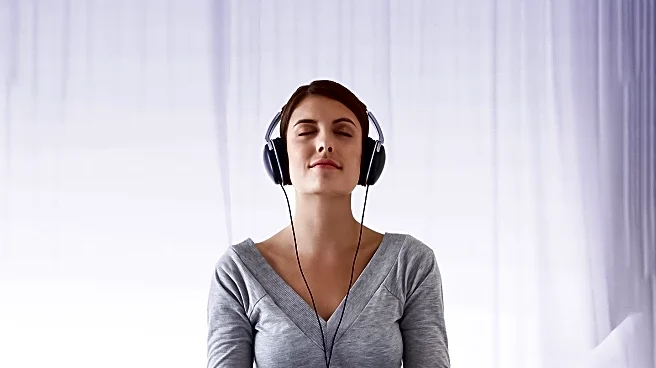What's Happening?
Listening breaks, or 'sound detoxes,' are gaining popularity as a self-care strategy to protect hearing and improve mental well-being. In a world filled with constant noise from traffic, electronics, and virtual meetings, experts recommend taking deliberate pauses from sound to allow the auditory system to recover. ENT specialists emphasize the importance of quiet areas and reducing headphone use to prevent auditory fatigue and long-term hearing loss. The practice of listening breaks is simple yet effective, offering benefits such as improved concentration, reduced stress, and better sleep.
Why It's Important?
The rise of listening breaks highlights growing concerns about the impact of constant noise exposure on hearing health and mental well-being. As younger adults increasingly report conditions like tinnitus and noise sensitivity, the need for proactive measures to protect hearing becomes crucial. Listening breaks offer a preventive approach to maintaining auditory health, which is essential in a society where noise pollution is prevalent. By prioritizing quiet, individuals can enhance their focus, reduce stress, and promote overall well-being, making listening breaks a valuable addition to self-care routines.
What's Next?
As awareness of the benefits of listening breaks grows, more individuals may incorporate sound detox practices into their daily lives. This could lead to increased demand for quiet spaces in public and private settings, as well as innovations in noise-canceling technology. Health professionals might advocate for listening breaks as part of broader wellness programs, emphasizing their role in preventing hearing loss and promoting mental clarity. The trend could also influence workplace policies, encouraging environments that support auditory health and employee well-being.
Beyond the Headlines
The concept of sound detox raises broader questions about the cultural value placed on silence and its role in mental health. It challenges the norm of constant stimulation and encourages a reevaluation of how individuals interact with their auditory environment. This shift towards valuing quiet may lead to long-term changes in lifestyle habits, promoting a more balanced approach to sensory input and overall health.










